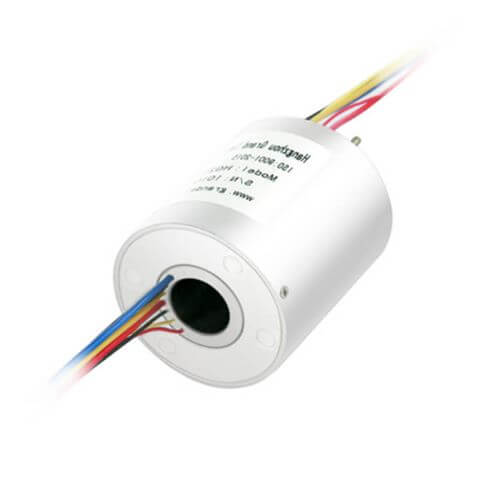Through hole slip ring is a kind of slip ring with a hole in the center. Same meaning as a through bar slip ring sometimes called a hollow shaft slip ring or slip ring hollow shaft. Through hole slip ring totally meets with continuous transmission of power, signals, weak current, high current, and high voltage under 360-degree unrestrained rotations. Low torque, low electrical noise, low loss, and easy maintenance as the main features.
The process of manufacturing and principle are similar to other slip rings. Power, signals, and other data are transmitted from the fixed position to the rotating position through the contact between the brush and the contact. Gold brush and contact will increase the working life. The basic technical parameters of a hole/bore slip ring mainly include bore outer diameter, bore inner diameter, length, circuits, voltage, current, maximum speed, etc. The length is variable and can be customized arbitrarily, while the outer diameter and inner diameter have some standard dimensions in through hole electrical slip rings industry. The number of circuits is the one core parameter for this series of products, the larger the number of circuits, the more complex the manufacturing process, and the higher the price cost.









